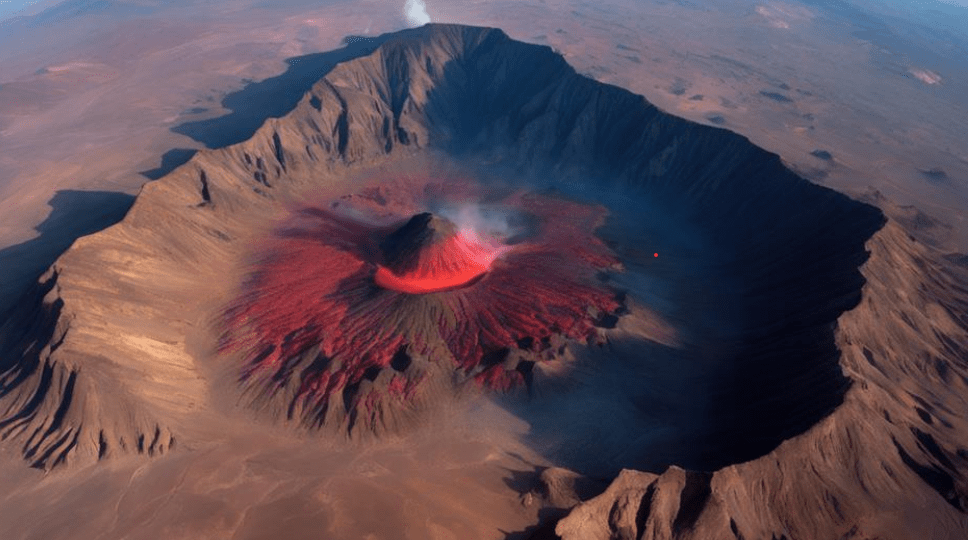By Islam Salah
The MENA region is often associated with deserts and ancient ruins, but beneath its surface lies a world of volcanic landscapes that many often overlook.
From the rocky plains of Saudi Arabia to the highlands of Sudan, these volcanic regions hold deep cultural stories, fascinating scientific discoveries, and potential that has yet to be fully explored by travelers.
Here’s a look at some of the volcanic landscapes in the MENA region that offer a unique glimpse into the area’s geological and cultural richness.
Harrat Khaybar: Saudi Arabia’s Fiery Desert
Tucked away north of Medina, Harrat Khaybar is a volcanic wonder with a story to tell. The landscape, shaped by eruptions over millions of years, is home to ancient Neolithic stone structures and mysterious “desert kites,” which are large stone formations whose purpose remains a puzzle.
The region’s volcanic history also gives us the Umm Jirsan lava tube, Saudi Arabia’s longest, which has served as a den for animals for thousands of years.
Jebel Marra: Sudan’s Volcanic Highlands
Jebel Marra, the highest mountain range in Sudan, stands at 3,042 meters in the heart of Darfur. Known for its stunning volcanic landscape, the range is home to the Deriba Caldera, which holds two unique lakes—one salty, the other fresh.
Despite its beauty, Jebel Marra remains a bit of a mystery, largely untouched because of the region’s ongoing conflicts. It’s a place where nature and history come together, a perfect example of Sudan’s rugged charm.
Jabal al-Tair: Yemen’s Volcanic Island
Jabal al-Tair, also known as Bird Mountain, is a volcanic island in the Red Sea between Yemen and Eritrea. The island, with a peak rising 244 meters above sea level, is home to a stratovolcano that erupted after 124 years of dormancy in 2007.
Once a military base and a key navigational landmark, the island has been uninhabited since the eruption. However, its remote location and volcanic activity continue to make it a fascinating geological feature.
Zubair Group: Volcanic Islands of the Red Sea
The Zubair Group in the southern Red Sea, experienced volcanic activity in recent years, with two new islands forming. Sholan emerged first, followed by Jadid shortly after.
These eruptions were preceded by seismic swarms, with thermal changes detected via satellite. Sholan Island’s eruption stopped in January 2012, while Jadid Island formed after a series of eruptions in 2013. These volcanic events marked a significant geological development in the region, with both islands gradually eroding over time.
Harrat Rahat: The Lava Fields of Saudi Arabia
Harrat Rahat, Saudi Arabia’s largest lava field, spans 20,000 km² across the western region, extending south of Medina. The volcanic field consists of four major lava fields formed by offset vent systems, creating a unique landscape dominated by basaltic scoria cones.
Although it’s most famous for its eruption in 1256 CE, which saw lava flow within 4 km of Medina, the field also contains small shield volcanoes, lava domes, and pyroclastic deposits.
A Volcanic Future
The volcanic regions of the MENA area are more than just geological curiosities; they are rich in myths, scientific intrigue, and untapped tourism potential. With the right investment in infrastructure and sustainable tourism practices, these regions could become some of the most sought-after travel destinations in the world, offering an experience that blends the natural world with a rich cultural history.
WE ALSO SAID: Don’t Miss…Vast Volcanoes, Legendary Castles & More: Get To Learn About What Makes Libya Special



